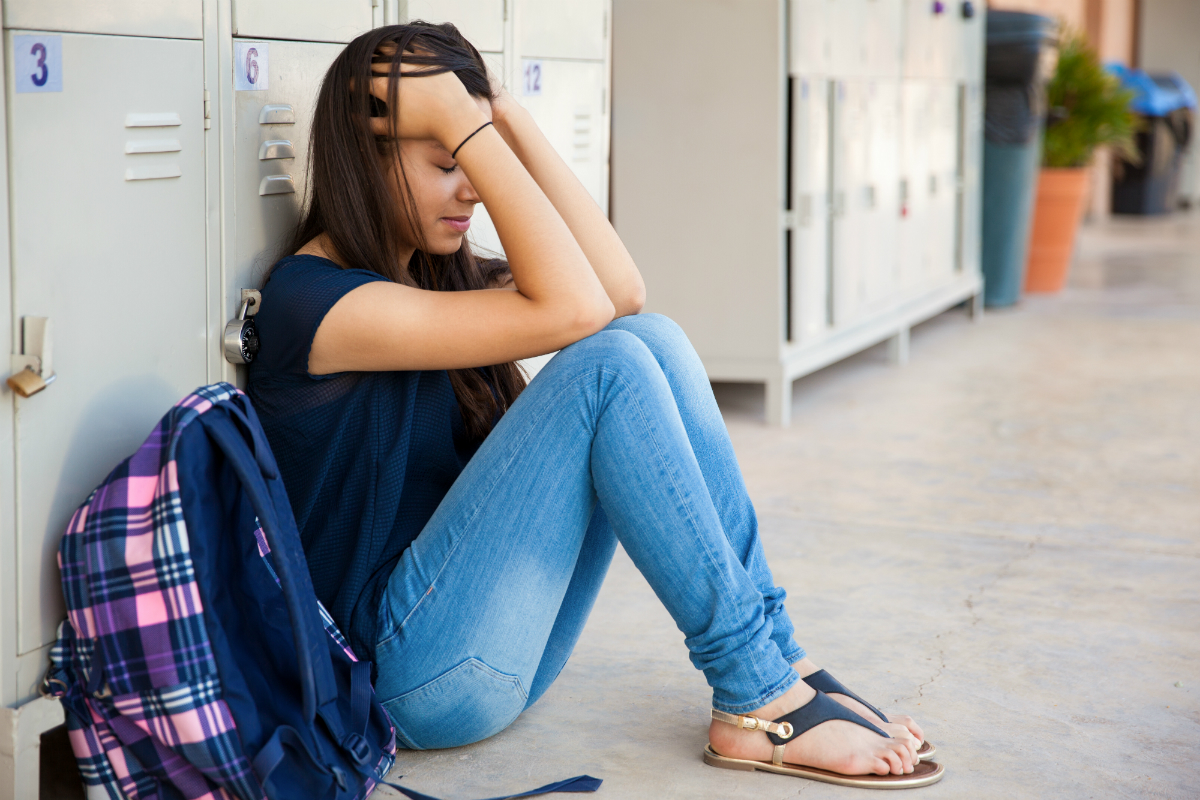Prior to being named California’s first surgeon general in 2019, Dr. Nadine Burke Harris worked as a pediatrician in the Bayview-Hunters Point neighborhood of San Francisco. There, she founded and became CEO of a clinic focused on addressing the community’s health disparities. Much of her work has surrounded the awareness and mitigation of adverse childhood experiences, or ACEs, and their effects on children and adults.
California Schools recently spoke with Dr. Burke Harris about how ACEs can impact education, what schools can do to help lessen toxic stress in children and how the COVID-19 pandemic is affecting student well-being.
How do you define adverse childhood experiences to those unfamiliar with the term?
An overwhelming scientific consensus demonstrates that cumulative adversity, particularly during critical and sensitive developmental periods, is a root cause to some of the most harmful, persistent and expensive health challenges facing our nation. The term adverse childhood experiences or “ACEs” comes from the landmark study of the same name published by the Centers for Disease Control and Prevention and Kaiser Permanente over two decades ago and specifically refers to the 10 categories of stressful or traumatic events assessed in the study. These include physical, emotional or sexual abuse; physical or emotional neglect or “household dysfunction” including parental incarceration; mental illness; substance dependence; parental separation or divorce; or intimate partner violence. ACEs are highly prevalent and strongly associated with poor childhood and adult health, mental health, and behavioral, educational and social outcomes.
What long-term impacts does having these types of experiences have for children growing up if left unaddressed?
Sixty-two percent of American adults have experienced at least one ACE, and 15 percent have experienced four or more. Those with four or more ACEs face double the risk of seven out of 10 of the leading causes of death in the U.S. including heart disease, stroke and cancer. The higher the ACE score, the more likely the individual is to also struggle with depression, PTSD, sleep and eating disorders, and substance abuse.
But the science also shows that we can mitigate or reverse the impacts of ACEs and toxic stress and increase positive outcomes through early detection and early intervention. Maintaining healthy relationships, good nutrition, regular exercise, restful sleep, practicing mindfulness and getting mental health support can decrease stress hormones, prevent health problems and help children heal.
How can those types of experiences affect how children learn and behave in the classroom?
Among the most notable and perhaps well-studied effects of ACEs are the impacts on learning and behavior. Compared to children with no ACEs, kids with four or more ACEs are as much as 32 times as likely to experience learning and behavior problems, and are three times as likely to repeat a grade. Given the significant prevalence of ACEs in all regions, socio-economic and demographic populations, trauma-informed training, practices and policies in the educational setting are fundamental to ensuring that all children have the best opportunity to learn.
What role do schools play in helping to serve children identified as experiencing chronic stress?
Both the World Health Organization and the CDC recognize that schools are not only places to transmit academic knowledge but also a place for vulnerable children to connect with supportive adults and peers outside of their families. Trained health care providers should be the ones screening for ACEs, but all educators should be practicing trauma-informed care. This includes establishing systems that enable safety; including predictable routines and social interactions; a calm physical environment; transparent and predictable rules; having clear, non-punitive consequences for violating rules; teaching social-emotional skills; employing participatory decision-making by students in school policies; and explicit family and community involvement. Restorative disciplinary practices and school structures that support physical and emotional safety prevent retraumatization and optimize children’s cognitive and social-emotional learning.
Regarding COVID-19, extended school closures, and visuals of things like empty grocery stores on TV, what sort of short- and long-term mental and social impact is all of this having on students?
Children are absolutely susceptible to the high levels of anxiety and stress we are all feeling right now. As adults, we can say, “Wow, I’m stressed out.” But kids may not be able to recognize or verbalize stress in the same way. During this time, all of our bodies, kids included, may be making more or less stress hormones than is healthy. Prolonged exposure to high doses of stress can lead to problems with a child’s physical and/or mental health, such as asthma, poor growth, depression or behavior problems. The good news is there are simple things we can help kids do every day, at home, to help regulate their stress response and buffer the negative impacts, keeping them healthy and on the right developmental track.
What are some ways that families or caregivers can help kids deal with being home long term without much social contact?
Uncertainty can create anxiety at any age — parents and caregivers should talk to their kids about coronavirus. Ask them if they have any questions or fears and share age appropriate facts with them.
The number one ingredient for healthy kids is a healthy caregiver. Safe, stable and nurturing relationships and environments where children feel emotionally and physically safe can protect their brains and bodies from the harmful effects of stress. Finding ways for kids to stay connected to their family, friends, teachers, coaches and community networks is critical. Video chats, virtual play dates, writing letters, texting silly pictures back and forth — helping kids stay connected to their networks is just as important for them as it is for all of us.
The things that really make a difference are health habits — sleep, exercise and eating healthy foods are important for buffering stress and strengthening our immune systems. Keeping regular hygiene — showering, brushing your teeth, getting dressed in clean, non-pajamas — are also critical for development, mental health and general cleanliness. If you are able to go outside, do so, practicing physical distancing, and get everyone’s bodies moving and breathing fresh air. That will help everyone’s mental health, too.
Once students do go back to school, what steps can school officials take to help ease kids’ worries about coming back, or help them reacclimate if that’s what they need?
The COVID-19 pandemic is a major stressor and for some it will even reach the level of trauma. As things slowly begin to open back up, even though we are all eager to get back to our usual routines and see our friends, the transition back to reintegrating in society may represent an additional stressor. In addition, it’s important to recognize that not every child is fortunate to have a safe, stable and nurturing home environment during shelter in place. We’ve seen a 40 to 50 percent decline in reports of child maltreatment since shelter-in-place began, which likely represents the notion that there may be a fair amount of child maltreatment going unreported. With all of that in mind, educators are likely to see increased behavioral and physical manifestations of stress and trauma — such as difficulty with impulse control and attention, increased physical complaints such as headaches and tummy aches and higher frequency of health problems such as viral illnesses and asthma. As a result, it is going to be more critical than ever before for educators to utilize trauma-informed and trauma-sensitive practices.
Schools and our educators are a critical part of a community-wide response to childhood adversity and toxic stress. School officials can take an important step to ensure that all personnel are trained to implement trauma-informed practices, to understand that “disruptive” behaviors may be possible symptoms of stress and respond with compassionate, buffering care. In addition, prevention of vicarious traumatization and supports for educator well-being are essential elements for trauma-informed educational environments.
How can something like this affect students with disabilities — especially those disabilities where maintaining routine is vital — and what can district leaders and families do to help mitigate any negative impacts?
Schools across the state are responding to the COVID-19 pandemic in different ways based on regional context. The California Department of Education is encouraging parents of children with disabilities to reach out to their school or district office to have a conversation about the impact of the pandemic on their student’s individual education program to find collaborative ways to support students during this time.
During times of uncertainty, it is especially important to stick with normal routines — structured days are an essential part of keeping kids happy and healthy. Your schedule should include set wake up and bedtimes, regular meals (including snacks), quiet time for schoolwork and reading, and regular movement and exercise.
It has been about a year since you took on the role of California’s first surgeon general. What positive steps have been taken in the state’s education or health systems toward addressing childhood trauma? What would you like to see happen in the next year?
Gov. Gavin Newsom created the role of California Surgeon General to marshal the insights and energy of medical professionals, public health experts, public servants and everyday Californians to address the upstream factors including toxic stress and early social determinants of health that are the root causes of many of the most harmful and persistent health challenges we face.
In January 2020, my office, in partnership with the California Department of Health Care Services, launched ACEs Aware, a first-of-its-kind statewide effort to train and reimburse California health care providers to screen patients for ACEs that increase the likelihood of ACE-associated health conditions due to toxic stress; a $160 million initiative over three years.
While the ACEs Aware initiative has been focused on health care providers, the next phase of our work includes trauma-informed care trainings for our educators and education system. Earlier this year, in his Administration’s 2020–21 State Budget proposal, Gov. Newsom included expenditure for the development of ACEs cross-sector trainings, led by my office. Of course, the COVID pandemic has introduced some unanticipated challenges into the budget process, but we hope the Office of the California Surgeon General will still be able to engage leading experts and consultants to develop a series of trauma-informed trainings specific to key sectors, including early childhood, education, government and law enforcement. These trainings will incorporate the latest evidence on trauma-informed and trauma-sensitive responses and will be made available statewide.
Particularly in the aftermath of the COVID-19 pandemic, as we have all experienced heightened stress on a community-wide level, we must translate science to action. If we want to build a trauma-informed future for all Californians, we must integrate and coordinate our resources and response across public and private sectors — that’s the road that lies ahead.





